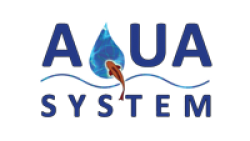pH VALUE
Definition: ph Value is negative decimal logarithm determining concentration [mol/dm3] of hydrogen cations H+. In general determines the presence of acids and alkalis in water:
- pH 0-7 – acid reaction
- pH 7 – neutral reaction
- pH 7-14 alkaline reaction
Water reaction is one of the most important indicator determining life conditions in the pond. To keep proper mechanism of self cleaning and to assure friendly climate for all occupants of the pond, pH value should be in range of 7.4 – 8.4. Each component of water has influence on pH value.
Reaction value should be regularly checked, as often as reasonably possible, at least few times a year. To run a quick pH test you can use disposable tests. It is recommended to run two tests – one in the morning, second in the evening and then compare results. If the pH value is too high it may be dangerous for biotope due to increased toxicity of ammonia, low pH value causes increase of nitrites. Fluctuation of pH value is also not favorable as this can lead to stressful situations for fishes and other microorganisms also can cause decrease of germs responsible for decomposition of harmful substances thereby increase the volume of harmful substances in the pond.
It is recommended to use proper agents increasing or decreasing pH, it is very important to make sure that agents change pH in controllable way (pH Minus independently of initial pH value always reduces pH to 80). Turf, lime other humus substances shouldn’t be used.
Taking preventive actions are the best and most effective solutions, regularly use water stabilizing and protective agents of Söll.
HARDNESS OF WATER
Inland natural reservoirs contain, depend on bottom, various amounts of soluble salts, mainly sodium, calcium, magnesium and potassium. Those have significant influence on fishes and other water organisms.
Total content of calcium and magnesium salts determines general hardness (GH), content of hydro carbonates and carbonates determines carbonate hardness (CH).
It is really important to keep hardness in specific limits to assure optimal conditions for reproduction of fishes and plants through supplying essential macro elements, calcium and magnesium.
CARBONATE HARDNESS OF WATER (CH)
Carbonate hardness is measure of temporary water hardness (sodium and magnesium bicarbonates). It is that part of water hardness which can be eliminated by boiling.
To determine CH value you should measure content of bicarbonate (acid carbonate).
Proper carbonate value in ponds should be higher then 5°, that water is buffered and will not come into reaction with severe pH fluctuation caused by acids and alkaline.
CONTENT OF OXYGEN
Oxygen dissolved in water is very important. Oxygen is supplied from air and also is produced by water plants. 5-7mg of oxygen per fr in temperature of 25°C is considered as standard. Fishes may die if this value is significantly exceeded, in case level of oxygen is too low fishes may suffocate. The level of oxygen can be measured with testers or by watching fish’s behavior (redness of gills, frequency of breathing, etc.) When the level of oxygen is increased there is usually froth on surface of the pond.
Factors increasing level of oxygen:
- Additional oxidizing system
- New plants
- Oxidizing agents such as SauerStoffActiv or SauerstoffDepot of Söll.
PHOSPHATES
Phosphate is non toxic element essential for proper development of all organisms; is part of DNA and storage of life energy and also main source of algae nourishment. Even a slight concentration of phosphate of 0,035mg per liter may cause increased growth of algae. Phosphates can not be properly filtered. May be only eliminated by precipitation process and bonding. Phosphate is lime crystallization inhibitor which normally occurs in supply system waters. If you want to eliminate mass growth of algae you have to change the composition of water by absorption of phosphates (mainly).
CONCENTRATION OF NITRATES AND NITRITES
These are toxic compounds and its excess in pond may be very dangerous. May harm fishes and may lead to various diseases and finally to death. Those compounds arise from decomposed organic remains, excrements, uneaten food. Although nitrate is less poisonous than ammonia, its small amount (0.1 – 2 mg/l) may permanently harm fishes or even cause death. The lower pH and lower concentration of chloride, the higher toxicity of nitrite.
Visible symptoms of nitrite poisoning: deep and heavy breathing, chaotic swimming. Nitrite may accumulate on bottom as a result of unbalanced water conditions, improperly working filters or putrefaction. In case of accumulation of huge amount of nitrite or nitrate it is necessary to change water (partly or fully), condition water or apply bacteria starter.
Ammonium ions NH4.
Ammonium ions are direct product of fish’s metabolism. Ions can easy transform into ammonia (NH3) when water has alkaline reaction (pH >7) which is much more toxic and even light concentration may caused fish’s death. NH4 Ion itself is relatively little toxic but due to high risk of transformation into NH3 it’s concentration in water should be 0.
